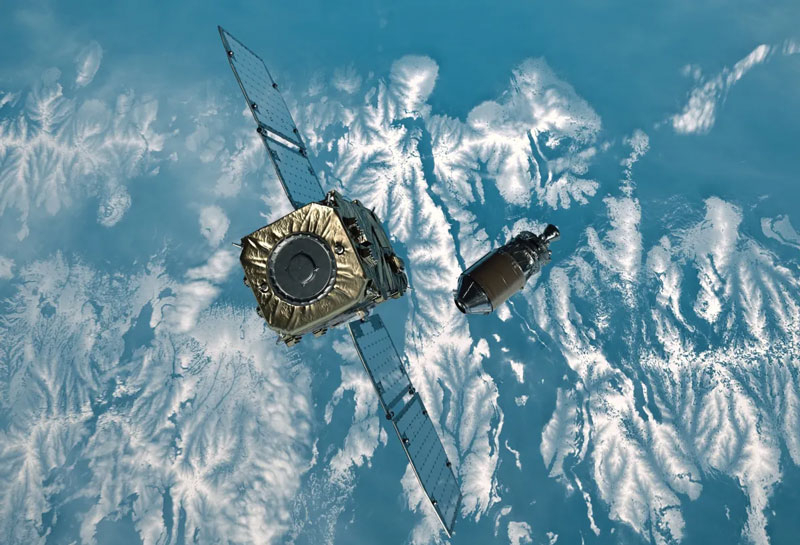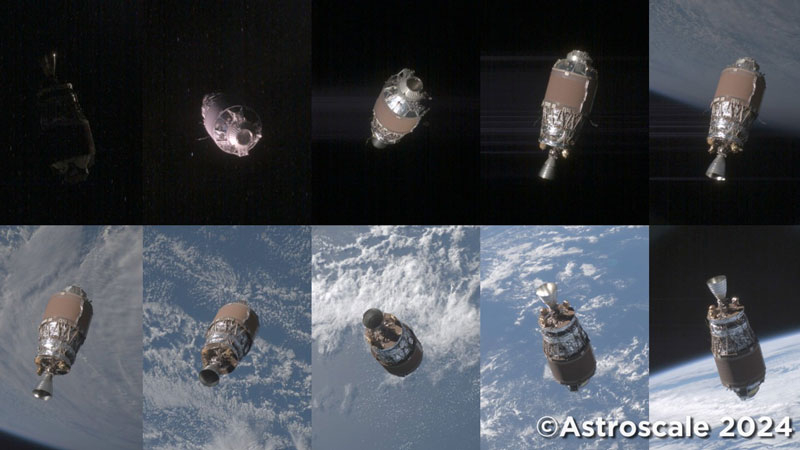The ADRAS-J mission of the Japanese company Astroscale has been successfully completed. A satellite previously launched into space in low orbit approached the old stage to inspect it for integrity. The satellite made three close flybys of the stage, which seems to be the height of difficulty for objects with cosmic speeds and limited fuel resources. The data obtained will make it possible to develop a reliable scheme for removing the stage from orbit, marking the beginning of the removal of space debris.

An artistic representation of a satellite’s inspection of a spent second stage. Image source: Astroscale
The ADRAS-J satellite weighing 150 kg and with 12 maneuvering engines was launched into space in February 2024. In April, he approached his goal – the 11-meter upper stage of the Japanese rocket H-IIA No. 15, sent into space back in 2009. Since then, this rocket fragment has become space debris, the accumulation of which in orbit is best avoided, for example, by controlled removal from orbit or transportation higher to the so-called disposal orbit.
The ADRAS-J experiment was supposed to begin the process of controlled removal of large pieces of debris from orbit. At the stage of its implementation, the inspector satellite had to examine the fragment from close range and let the engineers understand how best to pick it up for another satellite – the service one, which would perform the deorbit maneuver.
In April, an inspector satellite approached the rocket fragment at a distance of several hundred meters. By mid-July, the approach had been reduced to 50 meters, which became a maneuverability record. After this, the satellite made three flights of the stage at a distance of only 50 meters, one of which was accompanied by an “anomaly” and forced the device to move away from the stage to a safe distance. After calibrating the equipment, the flyby continued, allowing the mission team to obtain high-quality images of the stage from all sides.

Images of the upper “junk” stage during a flyby from a distance of 50 meters
The inspection confirmed that the payload adapter on the upper stage was in good condition. The tug satellite will be able to grab onto it with a robotic arm and pull the stage out of orbit. This will happen later before the end of this decade, when Astroscale will manufacture and launch the corresponding device during a new mission. Until today, one can assume that maneuvers for rendezvous and close flyby of satellites were only available for military-purpose vehicles, rumors about which periodically surface. Now similar technologies are available for commercial vehicles and this is definitely a new step in astronautics.